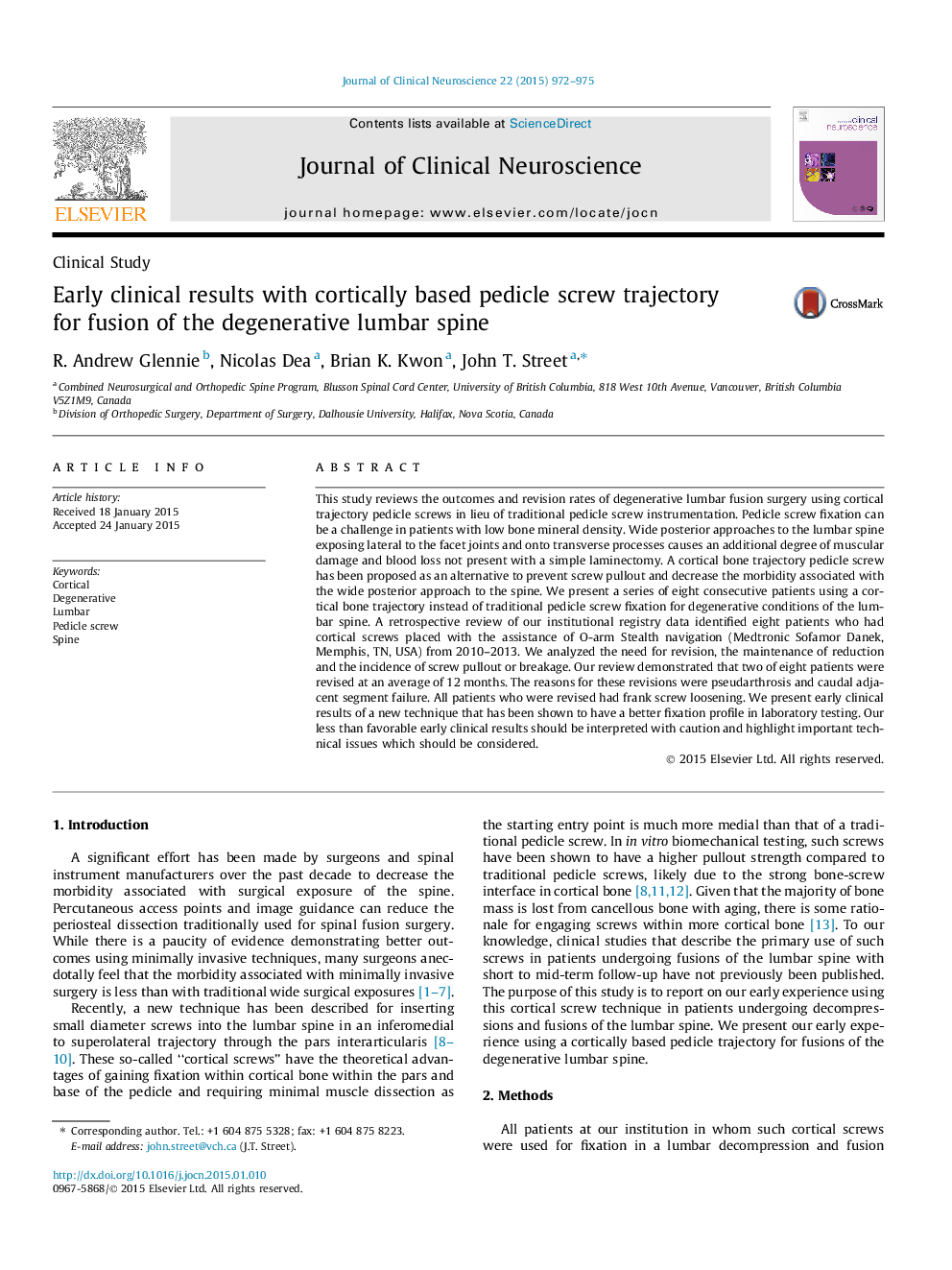| کد مقاله | کد نشریه | سال انتشار | مقاله انگلیسی | نسخه تمام متن |
|---|---|---|---|---|
| 3059066 | 1187420 | 2015 | 4 صفحه PDF | دانلود رایگان |
This study reviews the outcomes and revision rates of degenerative lumbar fusion surgery using cortical trajectory pedicle screws in lieu of traditional pedicle screw instrumentation. Pedicle screw fixation can be a challenge in patients with low bone mineral density. Wide posterior approaches to the lumbar spine exposing lateral to the facet joints and onto transverse processes causes an additional degree of muscular damage and blood loss not present with a simple laminectomy. A cortical bone trajectory pedicle screw has been proposed as an alternative to prevent screw pullout and decrease the morbidity associated with the wide posterior approach to the spine. We present a series of eight consecutive patients using a cortical bone trajectory instead of traditional pedicle screw fixation for degenerative conditions of the lumbar spine. A retrospective review of our institutional registry data identified eight patients who had cortical screws placed with the assistance of O-arm Stealth navigation (Medtronic Sofamor Danek, Memphis, TN, USA) from 2010–2013. We analyzed the need for revision, the maintenance of reduction and the incidence of screw pullout or breakage. Our review demonstrated that two of eight patients were revised at an average of 12 months. The reasons for these revisions were pseudarthrosis and caudal adjacent segment failure. All patients who were revised had frank screw loosening. We present early clinical results of a new technique that has been shown to have a better fixation profile in laboratory testing. Our less than favorable early clinical results should be interpreted with caution and highlight important technical issues which should be considered.
Journal: Journal of Clinical Neuroscience - Volume 22, Issue 6, June 2015, Pages 972–975
